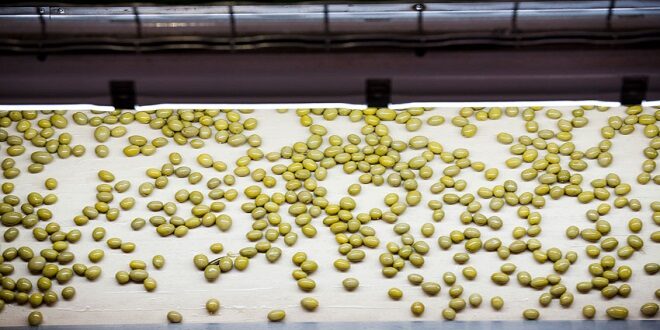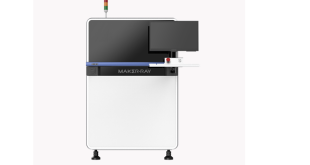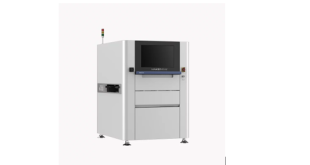His lye treatment consists of a NaOH solution (2%–3.5% w/v), which penetrates up to two-thirds of the olive flesh. The main transformation during the debittering process is the chemical hydrolysis of the glucoside oleuropein, which is transformed into oleanolic acid and hydroxytyrosol (Brenes et al. 1995).
According to Marsilio et al. (1996), lye also dissolves the epicuticular waxy coating and solubilizes the intercellular cement in the middle lamella, causing softening because of the hydrolysis of insoluble protopectins in the cell walls.
This favors the solubilization of olive components (sugars, minerals, organic acids, etc.) from olive flesh into brine. Alkali treatment time should be approximately 7 to 8 hours for most cultivars and more than 10 hours for sensible ones (Gordal). El-Makhzangy and Abdel-Rhman (1999) reported that concentrations of NaOH between 1% and 2% were the most suitable for the Àzizi variety (Egypt).
Chammem et al. (2005) also found a concentration of 2% NaOH as adequate for “Meski” (Tunisian). The addition of calcium and sodium salts during this treatment, in combination with low temperatures, may also improve texture and prevent sloughing in Manzanilla cultivars (Rejano Navarro et al. 2008).
After lye treatment, olives are washed to remove the excess alkali. Traditionally, two or three washings were done. However, they have now been reduced to a single wash, with a duration ranging from 6 to 24 hours (Garrido Fernández et al. 1997).
Fermentation
The washed olives are then brined in a 10% to 12% NaCl solution, which is rapidly enriched with the nutrients leached from olives. This brine may also be supplemented with organic acids to lower the pH at levels appropriate to control the growth of spoilage microorganisms and to facilitate the growth of lactobacilli (Garrido Fernández et al. 1997).
Benkeblia (1997) reported that the initial pH levels of brine and temperature were determinants for the relative abundance of Lactobacillus Plantarum and Lactobacillus Brevis in Sigoise (Algeria) fermentations. Durán Quintana et al. (1999) found that an initial pH level of 5.0 and 3.0% NaCl led to the highest acidification in fermentations carried out at 12°C. Asehraou et al.
(2002) recommend adjusting the initial pH level to 4.0 with lactic acid and the addition of sodium benzoate (0.05% w/v) to a 5% NaCl brine to control bloater damage. Low levels of NaCl (≤4.0%) and initial pH level correction (4.5–6.5) were also favorable for establishing a proper green olive fermentation (Vega Leal-Sánchez et al. 2003).
Chammem et al. (2005), using Meski (Tunisia) olives, observed that 9% NaCl was preferable for achieving a good fermentation. The addition of glucose (0.5%–1.0%) also led to more rapid acidification and a decrease in the pH level (Chorianopoulos et al. 2005).
Finally, the reuse of ozonated alkaline solutions as fermentation brines has been studied as an alternative to reduce the number of effluents generated by this industry (Segovia Bravo et al. 2007a) without any negative effect on the overall quality.
Spanish-style table olive fermentations are usually spontaneous. The fermentative process is divided into four phases. The first lasts from bringing until the initial growth of lactic acid bacteria (LAB) (~72 hours). The most relevant species found are Gram-negative bacteria of the genera Enterobacter, Enterococcus, Escherichia, and Citrobacter (Fernández Díez et al.
1985; Garrido Fernández et al. 1997; Campaniello et al. 2005). It is recommendable to reduce the length of this phase as much as possible to prevent spoilage. The second phase begins when the pH level of brine decreases up to approximately.
Conditioning (Grading, Pitting, and Stuffing)
Defective and browning spotted olives are removed after fermentation. Algorithms for the classification of olives by machine vision have been developed for this purpose (Diaz et al. 2000), and nowadays, their application at an industrial scale is common. Healthy olives are graded by size, according to their transversal diameters (IOOC 2004).
Last word
Recently, a new machine, which takes into consideration the extremely variable dimensional characteristics of olives, was developed to improve grading by the size of oval-shaped and elongated drupes.
 TRUTHREVIEWERS
TRUTHREVIEWERS




